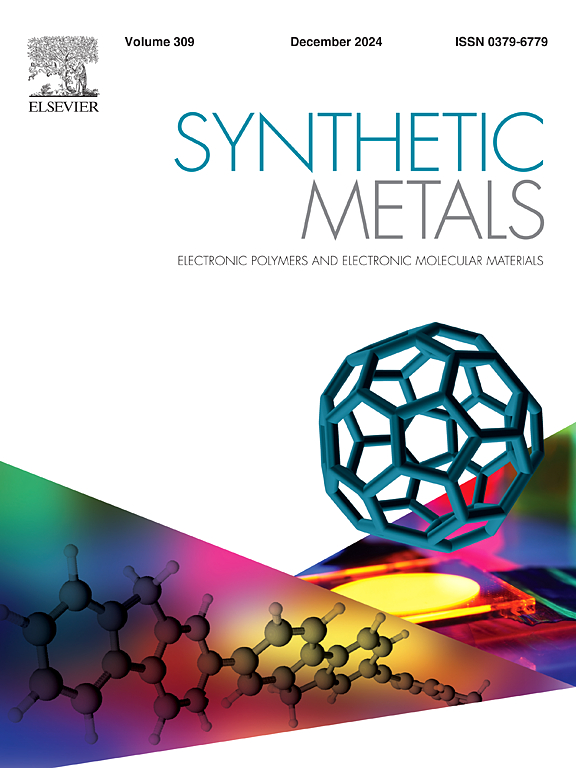从二阶复合模型的分析探讨温度对体异质结有机太阳电池参数的影响
IF 4.6
3区 材料科学
Q2 MATERIALS SCIENCE, MULTIDISCIPLINARY
引用次数: 0
摘要
有机薄膜太阳能电池的性能是由组成器件的每一层的电学和光电子特性引起的一系列因素决定的。然而,对电子输运的正确理论分析,从光载流子的产生和重组到电极的提取,在更高效的太阳能电池的竞赛中是至关重要的,成为理解所有涉及的电动力学现象的灯塔,指出必须对设备进行的纠正。本文比较了以pcdbt或PTB7-Th为电子给体分子,以富勒烯PC71BM为受体的两种经典体异质结有机太阳能电池。从新近发展的理论表达式的角度比较了两种器件在不同温度下的实验电流-电压结果,并将填充因子作为与光载流子的复合率与提取率之比直接相关的优点因子θo的函数进行了分析。我们还将填充因子分析应用于基于非富勒烯受体的最佳太阳能电池。本文章由计算机程序翻译,如有差异,请以英文原文为准。
Exploring temperature effects on bulk heterojunction organic solar cell parameters from the analysis of a second-order recombination model
The performance of organic thin-film solar cells is determined by a series of factors arising from the electrical and optoelectronic properties of each layer that composes the devices. However, a correct theoretical analysis of electronic transport, from the generation and recombination of photocarriers to their extraction by the electrodes, is of paramount importance in the race for more efficient solar cells, becoming a beacon in understanding all the electrodynamic phenomena involved, pointing the corrections that must be made to the devices. In this work, we make comparison between two classics bulk heterojunction organic solar cells, having PCDTBT or PTB7-Th as electron donor molecules and the fullerene PC71BM as acceptor. Experimental current-voltage results of the two devices, carried out at different temperatures, were compared from the perspective of a recently developed theoretical expression, and the filling factor was analyzed as a function of the merit factor θo, which is directly related to the ratio between the recombination rate and extraction rate of the photocarriers. We also applied that fill factor analysis to the best solar cells based on non-fullerene acceptors.
求助全文
通过发布文献求助,成功后即可免费获取论文全文。
去求助
来源期刊

Synthetic Metals
工程技术-材料科学:综合
CiteScore
8.30
自引率
4.50%
发文量
189
审稿时长
33 days
期刊介绍:
This journal is an international medium for the rapid publication of original research papers, short communications and subject reviews dealing with research on and applications of electronic polymers and electronic molecular materials including novel carbon architectures. These functional materials have the properties of metals, semiconductors or magnets and are distinguishable from elemental and alloy/binary metals, semiconductors and magnets.
 求助内容:
求助内容: 应助结果提醒方式:
应助结果提醒方式:


